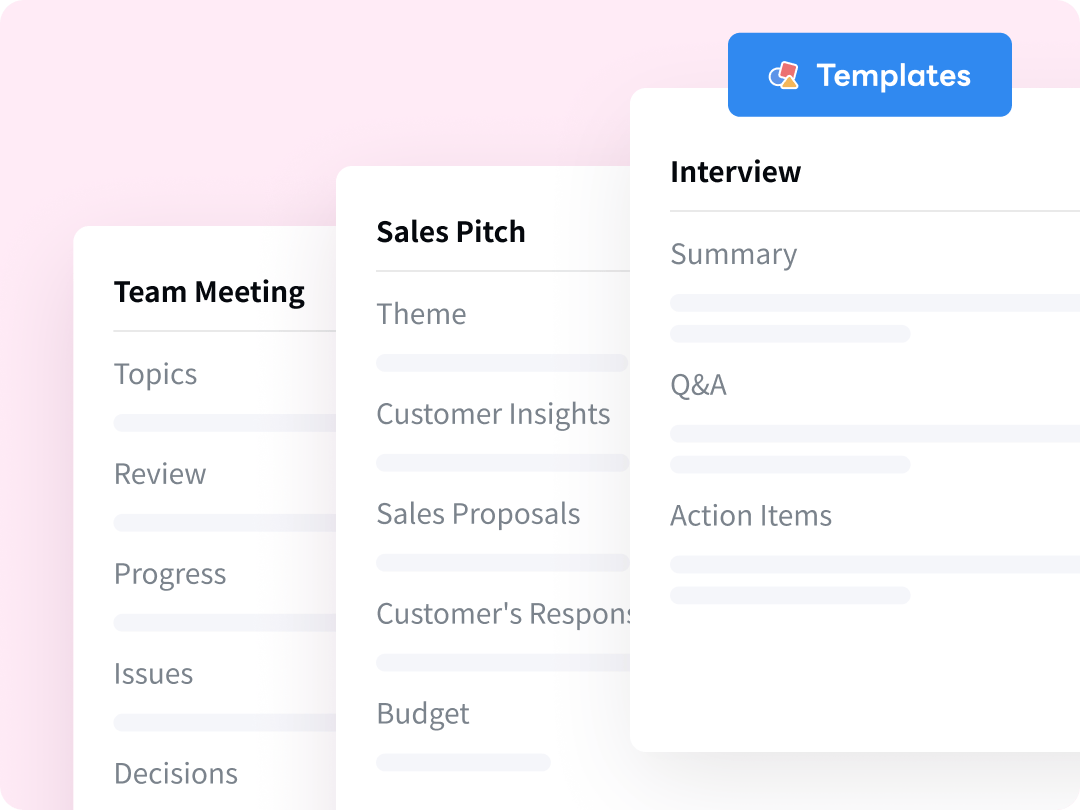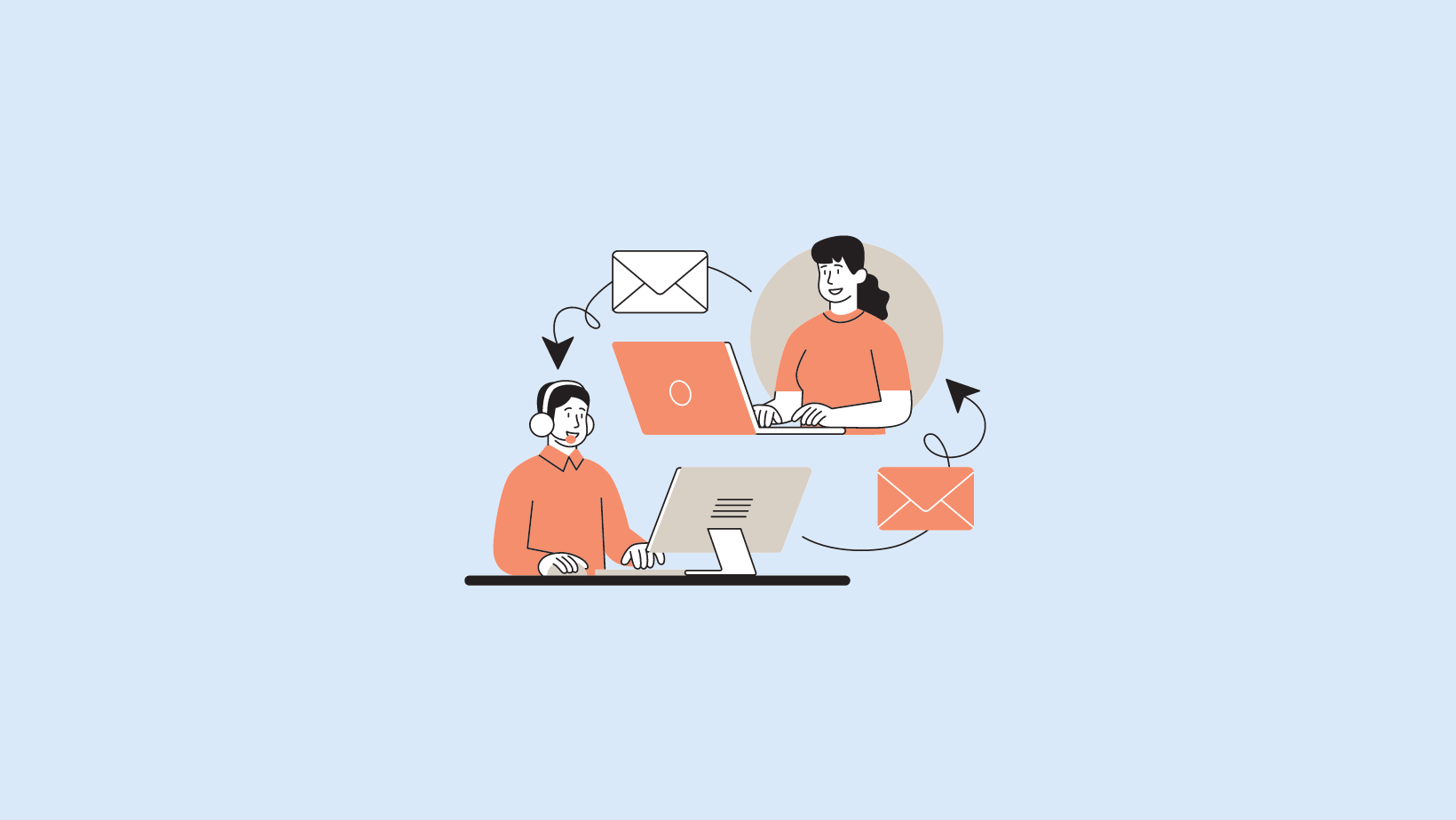Writing great sales follow-up emails is tough, even for the sharpest salesperson in the crew. It's hard to come up with emails that don't go straight into the trash. So, I thought of running a little experiment before writing this article. I generated multiple decent follow-up emails, sent them to the prospects, and checked which format (and content) was most loved.
There's no doubt that follow-up emails can be awkward, just like approaching someone again who first ignored your Hello. But it's important to remind your potential prospect about the sales email you sent before. Here, I'll show you the process of writing sales follow-up emails that can help you get positive replies (almost!) every time.
What to say in a sales follow-up email?
The first thing that immediately jumped to my mind was what I should say in the best sales follow-up email. When you're sending the follow-up email, you'll need to keep it short, to the point, and valuable.
For example, you can include a freebie in your email and ask the prospect to try your product/service for free. You'll also need to include a call to action so your warm lead knows the next steps or how they can reach out to you.
You could say: 'We are pleased to offer you a free demo of our product. You can reply to this email or call me at [insert the phone number] to schedule the demo.' Or, here's an alternative: 'I wanted to share [insert the relevant resources] that might be helpful for you.'
How to write a sales follow-up email?
A sales follow-up email typically has an opening, an introduction, a compelling offer, social proof, and a call to action (CTA). Each part can be personalized depending on your goals and the client. Here's how to write a sales follow-up email:
1. Personalize the message
I'm sure you must have received your fair share of generic emails that have been sent to thousands of other people. You either mark those emails as spam or send them to trash. That's why it's better to personalize the emails you send to the prospects. You can start with compliments, but they shouldn't be over the top. Just keep it simple and clear, and start with a personal greeting like 'Hey, John.'
2. Remind them about the interaction
People are busy. You're not always going to get a response with the first sales email (unless you're lucky!). It might not even get opened. So, it's important to remind them about what you shared in the previous email. You don't have to copy-paste the entire previous sales email. Instead, be as brief as possible when restating the purpose.

Never miss a detail again
Streamline your meeting documentation process with Notta AI meeting assistant. Easily search, review, and share meeting notes.
3. Create a compelling offer
There's a high chance that the prospect has opened the email, but the offer didn't compel them to call you. If that's the case, you may consider providing some more value. For example, you can share a revised price quote with lower rates or offer them a free demo of your product. Remember, the offer doesn't have to be unprofitable — or complex — but it needs to make sense for you and your client.
4. Include case studies or social proof
Your prospect might also be interested in knowing that you're credible, so add something to show you've something to back up the claim. For example, you say something like this, 'Would you be interested in using our [product/service] if I was to give you a free trial for 30 days? Recently, our [product/service] helped [client] to achieve [results].'
5. Write a clear call to action
Based on my experience, I agree with the advice to keep the call to action clear and short. I've A/B tested many CTAs, and there are only a few that offered consistent results for me: a free demo and a limited low-price offer.
When to send a follow-up email?
I've heard a lot of rules regarding follow-up emails, but I usually send a maximum of 3-5 follow-ups before I quit. Here's a general approach you can follow:
Email 1: +2 days
Email 2: +7 days
Email 3: +7 days
Email 4: +14 days
Email 5: +30 days
I like to space the follow-up emails by at least 4-6 days, and I try not to send emails on weekends or Mondays (so I don't spam anyone when they're enjoying their free time or extremely busy).
Sales follow-up email template
The words you use in the follow-up email will be unique to your needs, but I've found that a template can help you cover all the important points. Here, I'll share four simple follow-up email templates for sales that you can use to confirm pricing details, simply follow up, or other usage scenarios.
Sales follow-up email template for confirming price details
Subject: Pricing information about [product/service]
Hey [insert name],
Thank you for joining in yesterday. I really enjoyed talking with you and learning about your [role] at [company].
Since you were interested in our [product/service], we're pleased to offer you a free 15-day trial. Once the trial period ends, you will need to pay [mention the amount] for 3 months.
Or, you can pay only [mention the decreased amount] to enjoy the benefits for one year. I'm attaching the detailed pricing information below.
If you need any other details, feel free to drop me an email or call me at [insert the phone number] at any time.
Best Regards,
[Your Name].
Sales follow-up email template after no response
Subject: Still any interest in our [product/service]?
Hey Joey,
It's been two weeks since I haven't heard from you. Are you still interested in our [product/service]?
If yes, we are giving [a free demo/free trial/vouchers] that you can use to test our products for free.
It's a limited-time offer. You can click on the [insert the link] to avail of the offer.
If you've any questions, please feel free to let me know and we can get on a call to discuss them.
Best Regards,
[Your Name].
Sales follow-up email template after a trigger event
Subject: Looking for more information about [product]?
Hey Sarah,
I noticed you've signed up for a 15-day free trial of our [product]. I have some helpful resources for you to get started with the services.
[Add YouTube video link to show the product in action]
[Add link to the detailed user guide]
[Add links to other help documents or blogs]
Would you like to schedule a free demo to help you understand the features in detail? Do let me know what time suits you best!
Best Regards,
[Your Name].
General sales follow-up email template
Subject: Something you don't want to miss
Hey Kelia,
I hope you're having a great day. I wanted to follow up on my previous email sent on [mention date]. I know you must be busy, but I'm pretty sure our [product/service] can make things easy for you and contribute to your growth.
If you've got some time to go through the email I sent over, please feel free to let me know about any questions. You can also take advantage of the 15-day trial to test our product. Thank you for your time!
Best Regards,
[Your Name].
Sales follow-up email mistakes to avoid
After spending a good chunk of time (almost two weeks) testing different follow-up sales emails, here are a few mistakes that you should avoid.
Don't include a lot of unnecessary information: Every word counts in a sales follow-up email. The longer the email, the lower the chance of getting a reply. Instead of writing a lot of unnecessary information in the email, keep it short and engaging.
Avoid grammatical errors: I'm not a grammar nazi, but professional emails with grammatical errors can be a major turn-off. Once you've written an email, make sure to read it thoroughly to avoid spelling errors.
Don't sound robotic: If you're using AI tools like ChatGPT to write sales follow-up emails for you, make sure to edit them carefully before hitting the send button. You'll also want to sound at least vaguely human.
Avoid sales-y language: Your sales email is not the only point where you can pitch your services or products and close the deal. So, it's important to avoid sounding too sales-y, as it can be a major turn-off for the receiver.
Key takeaways
Sales follow-up emails aren't necessarily difficult, but they're actually boring. You're just repeating what's already said. But they're necessary: they serve as a reminder and increase the chances of getting a 'Yes' from the prospect. Remember, it takes a lot of hit and trial to find out the method that actually works for you. The truth is, it probably varies by industry and individual.
FAQs
How many follow-up emails should I send?
While there's no one-size-fits-all approach that you can consider when sending follow-up sales emails, around 3-5 emails are generally considered optimal. You have to space each email by 4-7 days so it doesn't look like you're spamming the receiver.
How to write a sales follow-up email after the initial meeting?
If you're done with a positive initial meeting with the client, you'll probably need to send them a sales follow-up email. You can write something like this: 'Hey, John. It was great talking with you yesterday. Here's the full transcript and meeting summary link [insert link here] of what we discussed. Let me know what next steps make sense to you. Thank you again.'
What should I do if I still don't get a response after multiple follow-up emails?
If you don't get a response after multiple follow-up emails, you may consider writing a break-up email and shifting your energy to other leads. It could be as simple as: 'Hey, David. I was looking forward to discussing [product/service] with you, but I haven't received any response. It seems like this isn't the right time to contact you. If anytime you feel the need for my [product/service], feel free to reach out to me via email.'

